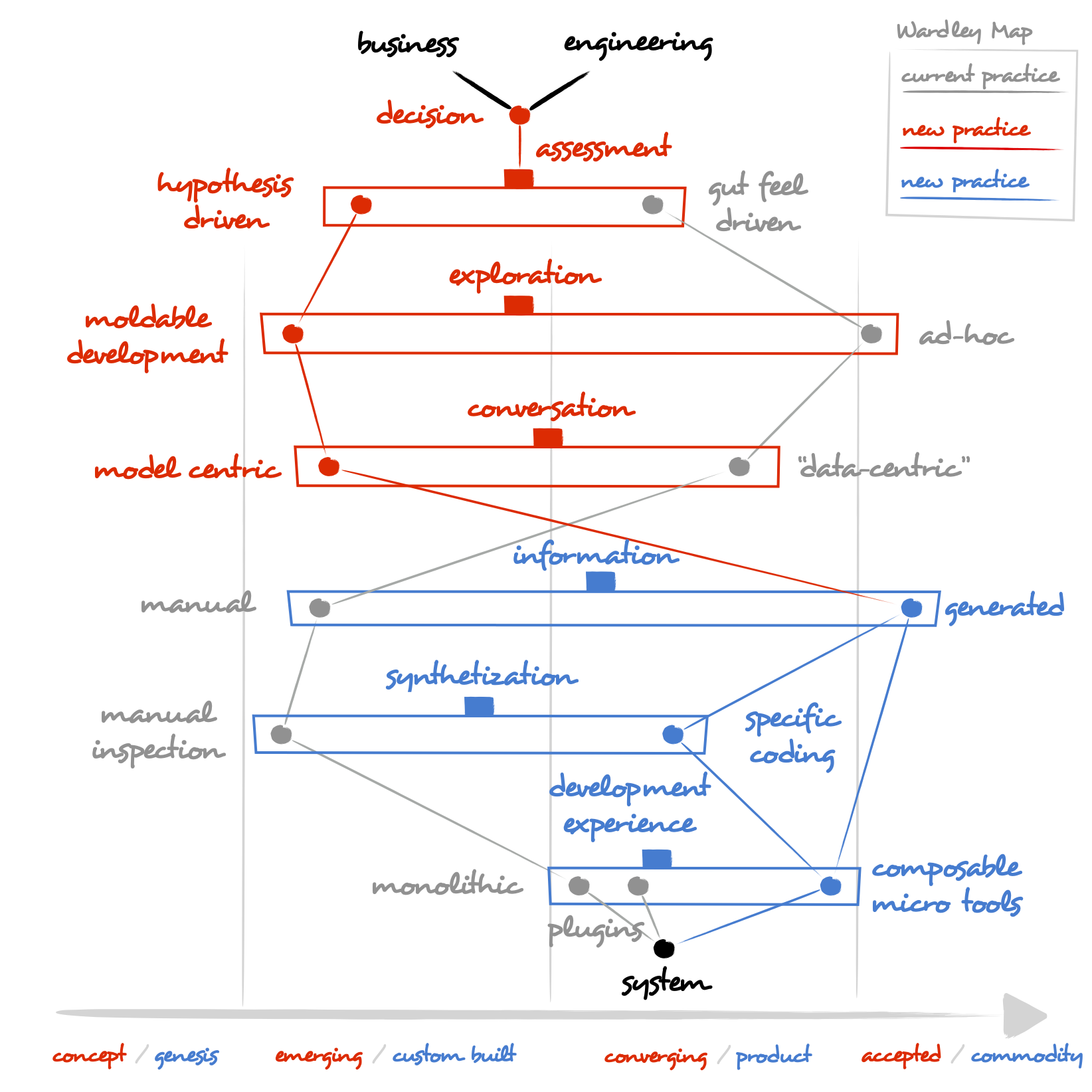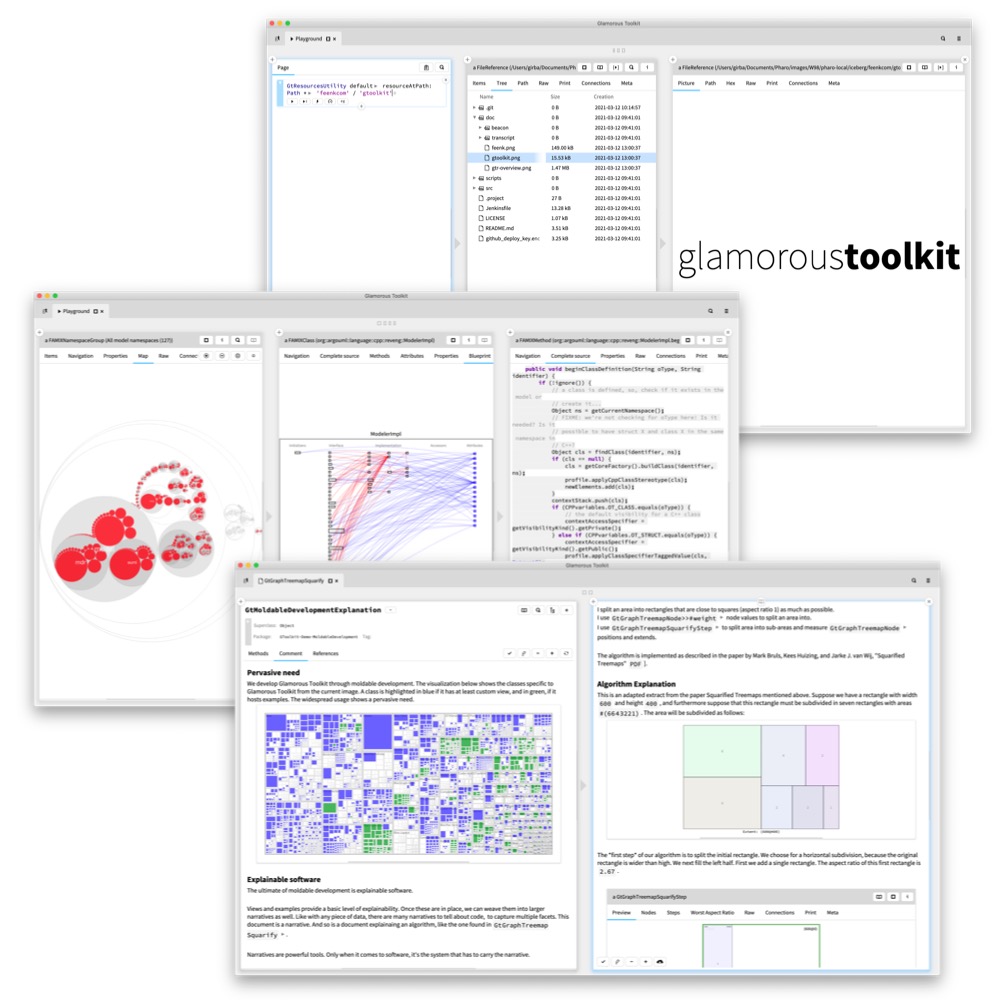Frequently asked questions
What's the difference between Moldable Development and Literate Programming?
They are similar in that they both promote the use of narratives for depicting systems. However, Literate Programming offers exatly a single narrative, and that narrative is tied to the definition of the code. Through Moldable Development we recognize that we always need multiple narratives, and that those narratives must be able to address any part of the system (not only static code).
Isn't Moldable Development like model-driven engineering then?
Not quite. It's more similar to model-centric engineering: one system and multiple views on it.
Ok, then isn't it more like visual programming?
No. Typically, visual programming entails a graphical notation with which you create programs. Through Moldable Development, you construct views orthogonally to how the program was defined. Furthermore, the visuals are not limited to code, but we apply it throughout the whole system, including objects, logs or data.

